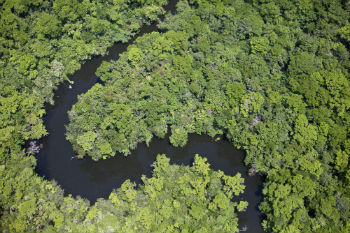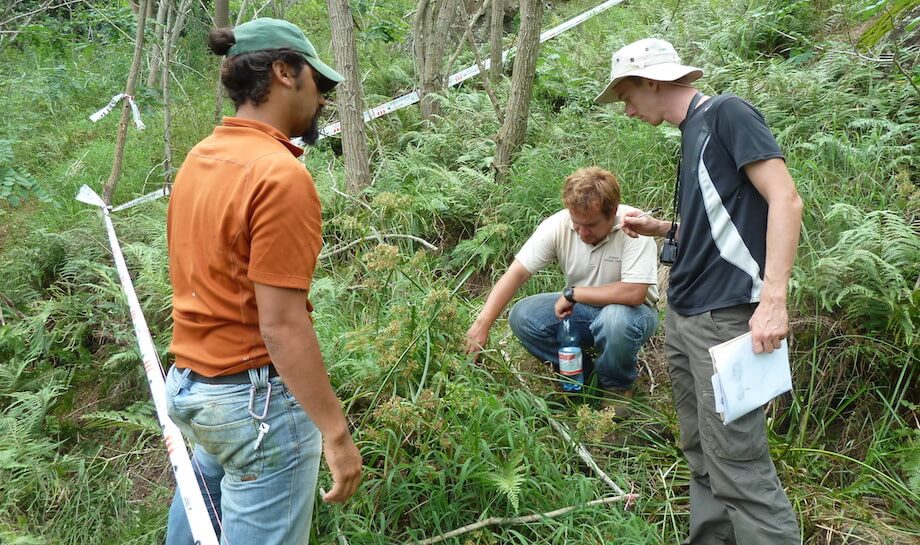CEPF has a robust system for monitoring and evaluating the impact of the conservation projects it funds. This system helps us to both assess the effectiveness of our program and to identify opportunities for improvement.
Our monitoring system is organized into four "pillars" of CEPF: Biodiversity, Civil Society, Human Well-Being and Enabling Conditions. To demonstrate our impact in each of these categories, we gather and report data for 16 "global indicators."
Pillar 1: Biodiversity
Our goal: Improve the status of globally significant biodiversity in critical ecosystems within hotspots. How do we measure this? CEPF measures progress toward this impact category via indicators focusing on species and sites.
Biodiversity Indicators
- Number of globally threatened species benefiting from conservation action.
- Number of hectares of Key Biodiversity Areas with improved management.
- Number of hectares of protected areas created and/or expanded.
- Number of hectares of production landscapes with strengthened management of biodiversity.
- Number of protected areas with improved management.
- Number of hectares of terrestrial forest, terrestrial non-forest, freshwater and coastal marine areas brought under restoration.
Pillar 2: Civil society
Our goal: Strengthen the capacity of civil society to be effective as environmental stewards and advocates for the conservation of globally significant biodiversity.
CEPF monitors its contribution to strengthening civil society impact through structured self-reporting by grantees, verified by spot checks by the CEPF Secretariat and regional implementation teams.
Civil society indicators
- Number of CEPF grantees with improved organizational capacity
- Number of CEPF grantees with improved understanding of and commitment to gender issues.
- Number of networks and partnerships that have been created and/or strengthened.
Pillar 3: Human well-being
Our goal: Improve the well-being of people living in and dependent on critical ecosystems within hotspots.
CEPF uses two categories of metric to monitor its impacts on human well-being at the global scale: 1) beneficiaries; and 2) climate. CEPF monitors the beneficiaries of its investments through structured self-reporting by grantees at the end of their projects, verified by spot checks by the CEPF Secretariat and RITs. CEPF monitors its contribution to combating climate change through self-reporting by grantees at the end of their projects, coupled with analysis of GIS data and carbon maps to calculate the amount of carbon stored at CEPF-supported natural habitats.
Human well-being indicators
- Number of people receiving structured training.
- Number of people receiving non-cash benefits other than structured training (such as increased access to clean water, increased food security, increased access to energy, increased access to public services, increased resilience to climate change, improved land tenure, improved recognition of traditional knowledge, improved representation and decision-making in governance forums, improved delivery of ecosystem services, etc.).
- Number of people receiving cash benefits (e.g. increased income from employment, increased income from livelihood activities, etc.).
- Number of projects promoting nature-based solutions to combat climate change.
- Amount of CO2e (carbon dioxide equivalent, a standard measure of greenhouse gas emissions) sequestered in CEPF-supported natural habitats.
Pillar 4: Enabling conditions for conservation
Our goal: Establish the conditions needed for the conservation of globally significant biodiversity.
Three broad enabling conditions provide the framework for monitoring impacts at the global level under this pillar: 1) ensuring that public policies are in place that promote (or do not inhibit) conservation action; 2) ensuring sufficient capital and flow of financial resources for conservation; and 3) promotion of biodiversity-friendly practices in the private sector.
Enabling conditions indicators
- Number of laws, regulations, and policies with conservation provisions that have been enacted or amended.
- Number of sustainable financing mechanisms that are delivering funds for conservation.
- Number of companies that adopt biodiversity-friendly practices.






